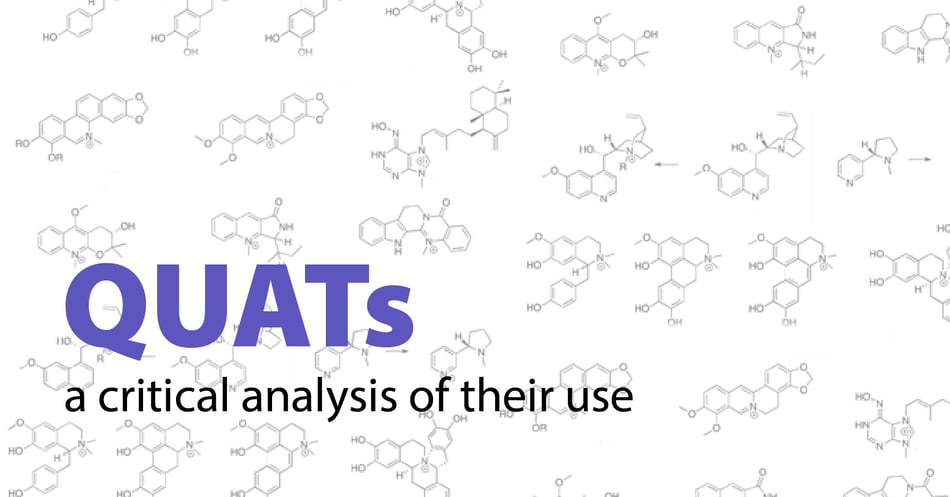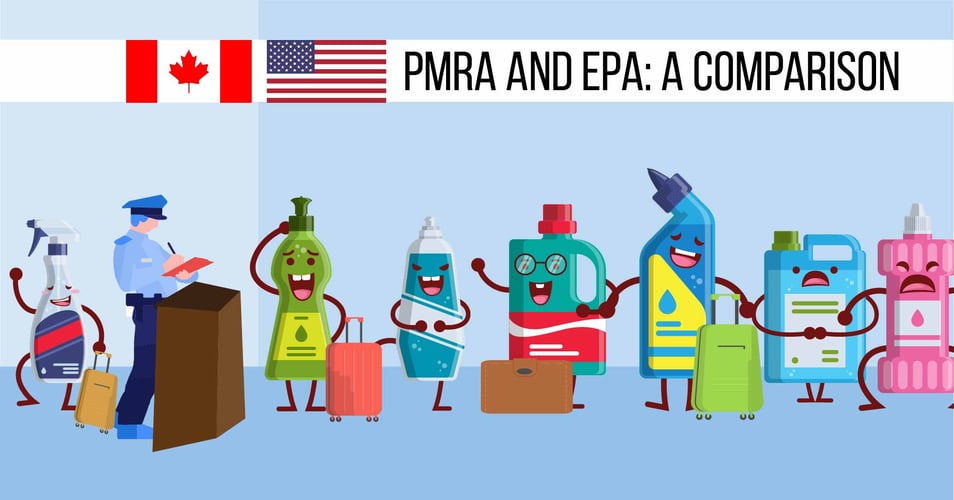QUAT Cleaners: A Critical Analysis of their Use

Achieving and maintaining sanitized surfaces in hospitals requires an arsenal cleaning and disinfecting products, with quaternary ammonium compounds (QACs or QUATs) being a popular choice. However, as with all cleaners and disinfectants, there are both benefits and risks to their use. In today's post, we'll explore the use of quaternary ammonium compounds and some growing concerns about their impact.
Health Concerns: While quaternary ammonium compounds excel at disinfecting surfaces, they may pose risks to human health. Studies have linked exposure to QUATs with various health issues, including respiratory problems, skin irritation, and allergic reactions. Continuous exposure to these compounds, particularly in concentrated forms, can present significant risks to cleaning professionals and occupants of treated spaces. It should be noted that most hospital-grade cleaners pose similar risks; the difference is that the dangers of bleach and other caustic cleaners is more well-known. For more information, see the National Pesticide Information Center.
Environmental Impact: By nature of their rapid dissipation, quaternary ammonium compounds generally pose minimal risks to the environment. Unlike some other cleaning agents, QUATs are not persistent pollutants and tend to degrade rapidly in water and soil. This means that when used as directed and disposed of properly, the environmental impact of QUATs is relatively low. However, it's essential to follow recommended usage guidelines and disposal practices to minimize any potential adverse effects. Recent research, however, shows dramatic upticks in the amount of QUATs found in wastewater and residential dust, indicating a need for greater attention.
Antimicrobial Resistance: One of the more concerning aspects of QUATs is their contribution to antibiotic resistance. Prolonged exposure to sub-lethal concentrations of QUATs can exert selective pressure on bacteria, leading to the development of resistance mechanisms that make use of QUATs far less effective. Recent research confirms the emerging concerns about QUAT resistance, with even more concern arising from research showing cross-resistance to antibiotics, the medicines used to treat infection. This is particularly an issue with so-called "residual" QUATs, which persistently expose pathogens to sub-lethal concentrations.
Effectiveness Against Specific Pathogens: While quaternary ammonium compounds demonstrate broad-spectrum antimicrobial activity, they are not as effective against all types of pathogens. Certain viruses, such as norovirus and adenovirus, are less susceptible to QUAT-based disinfectants. Additionally, QUATs are less effective against bacterial spores and certain types of fungi. Relying solely on QUATs for disinfection may lead to a false sense of security and leave gaps in infection control strategies.
Given the concerns surrounding quaternary ammonium compounds, it's essential to use best practices for cleaning and disinfection. In a hospital setting, QUATs can serve an essential role in daily cleaning, when used and stored properly. Recent attempts to create residual QUAT coatings have tried to lengthen the efficacy of the compounds, but have not yet achieved fast enough kill rates across the full range of pathogens to be useful in a hospital setting, and certainly not enough to offset the real risks of resistance. For truly permanent, ongoing biocidal efficacy, one must turn to copper and copper-infused products, currently the only materials EPA registered for public health claims. Only these products kill the full spectrum of disease-causing pathogens in under 2 hours, preventing the transmission of healthcare associated infections.
![EOScu Logo - Dark - Outlined [07182023]-01](https://blog.eoscu.com/hubfs/Eoscu_June2024/Images/EOScu%20Logo%20-%20Dark%20-%20Outlined%20%5B07182023%5D-01.svg)




